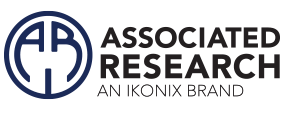WIRE CABLE CASE STUDY
Applications Consulting / 1 Day
May 2019
A large cable manufacturer was looking for guidance in their specialized application. Hipot testing large spools of cable creates unintended capacitance and potential danger when leaving products charged after testing. They currently utilize 6 Hypot® Series models to perform their DC hipot testing, adhering to UL1569 AND UL 2556 standards. This training covered Basics of Electricity, Electrical Safety Testing 101/102, instrument functionality and safe workstation practices. Turnover in the company was slowly diminishing their Hipot experience and we were enlisted to train staff and recommend improvements. This training was split into two sessions with 7-10 operators in each.
Consulting Visit
With most wire manufacturers the fear of testing outside our maximum DC capacitive load specification exists, which was the case with this customer. At the end of each test performed, even with a 30 second ramp down, residual voltage that remained was greater than 500V every time. This creates a situation where an operator can potentially get shocked, which many trainees reported happening. We conducted specific training on how to ensure the product was fully discharged while also identifying potential design flaws in the test setup. A lack of a true daily verification method was also discovered, this being a UL requirement, we created a test file and utilized known resistors to demonstrate an effective way to accomplish this requirement.
KEY POINTS
- Basics of Electrical Safety Testing/Safe Work Station
- UL1569 AND UL 2556
- Setup and Programming of Hypot Series
- Performing EST Tests on 1000 ft+ of cable
- Train Operators and Staff with Safe Workstation Practices
- What to Avoid When Testing
Consulting Notes
They found the idea of barcode scanning and exporting system/test files advantageous and were looking for more information on how to best implement this. They were also unaware of our extended warranty with calibration policy, which they expressed wishing they knew before using a 3rd party calibration lab. Overall, the engineering team and operators were left more confident in testing their products in a safe manner while properly verifying their testers functionality on a daily basis.




